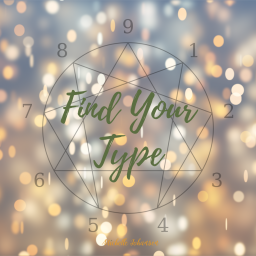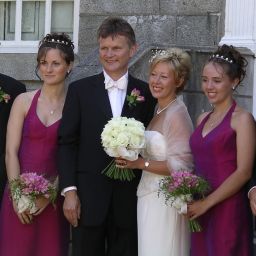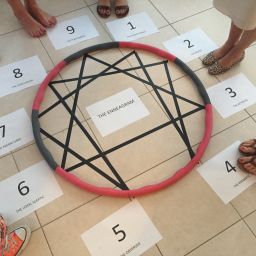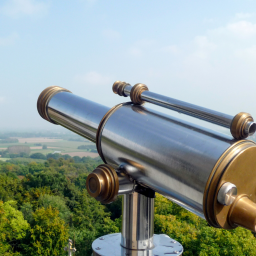In short , the Enneagram is a way to aid self-reflection, increase self-awareness and develop greater Emotion Intelligence, which together can increase our understanding, empathy and compassion for others as well as enlarge our capacity for leadership.
The origins of the Enneagram
The Enneagram is an ancient wisdom tool for personal transformation which has been brought up to date through modern psychology and is now one of the most complete tools for both personal development and spiritual awakening.
The actual origins of the Enneagram symbol are lost in the mists of time; various authors claim different versions of the story.
What they all agree on is the, 9 pointed star within a circle, symbol is ancient, at least 2000 years old, and that a teaching associated with the symbol, very unlike the Enneagram we know today, was handed down as verbal tradition through the years.
What is known is that in the early 20th Century, the mystic G I Gurdjeff studied the Enneagram, probably at a mystery school, and later started teaching it as a nine-step transformational process.
Later Oscar Ichazo, of the Arica Institute in Chile, adapted the Enneagram as a tool for discerning nine core motivations that give rise to personality differences. Ichazo saw those differences through the lens of the seven deadly sins (plus two, the universal sins of deceit and fear at points 3 and 6) as personality fixations.
It was then Ichazo’s student, Claudio Naranjo, who developed the types as psychological pathologies. Naranjo took the Enneagram system to San Francisco where he taught it to a number of students, who in turn went on to develop the system, combining it with modern depth psychology, into the tool it is today.
I studied the Enneagram under two of Naranjo’s original students, A H Almaas and Sandra Maitri, authors of deeply spiritual works on the Enneagram, as part of my 12 years study as a Diamond Approach student from 2008 – 2020.
During the 1970’s Don Riso came across Naranjo’s Enneagram teachings while he was studying to be a Jesuit priest. He left before being ordained, and dedicated his life’s work to further develop the Enneagram of personality and co-authoring the seminal work – The Wisdom of the Enneagram with Russ Hudson, plus many other books.
In 2007 I completed the Enneagram Practitioner trainings Part 1 taught in Amsterdam by both Don Riso and Russ Hudson, and then Part 2 in 2009 in Copenhagen with Russ Hudson and Andrea Isaacs.
Since I became a coach in 2007, I have introduced 100’s of clients to the Enneagram and usually provide clients with a copy of the Daniels and Price – The Essential Enneagram book for self-study of their personality type.
How does the Enneagram work?
“Ennea” is the Greek word for nine and “gram” means diagram, the Enneagram symbol is a circle with a 9 pointed star depicting the layout of the nine core personality types.
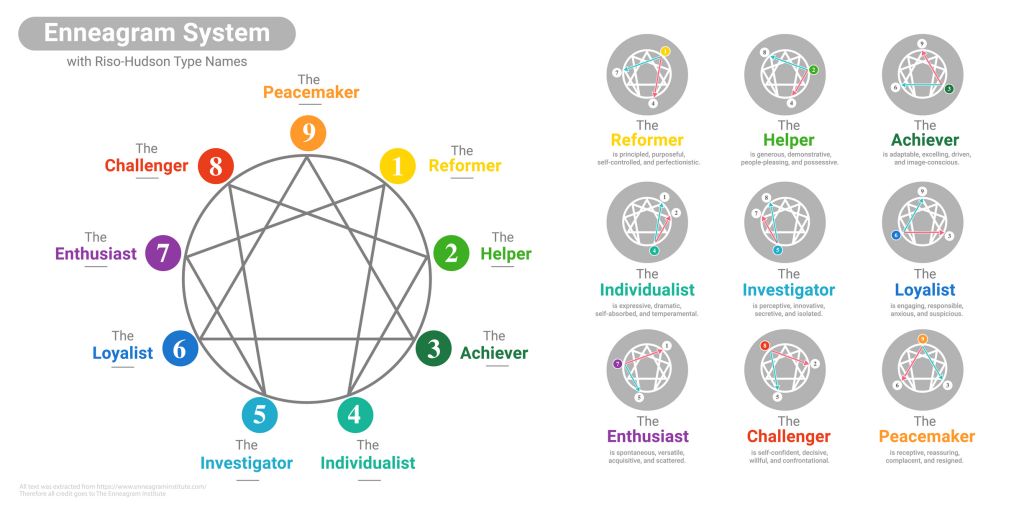
The type numbers are value neutral with all types in the healthy psychological range, having the capacity to be high functioning human beings and notably fantastic leaders.
It is important to note that we all have some traits from all of the types, but in our own unique combination, with one core dominant type which will remain “our type” throughout our lives.
Within each Enneatype there are 3 main categories, referred to as the “levels of development”. The top psychologically “Healthy”range points to the level of development where we are aware of our personality’s tendencies but have the choice whether to act on them or not. In the “average” range we act mostly on autopilot with our behaviour being driven by unconscious personality drivers, this is where most adults hang out most of the time. All types also have the possibility of dropping into the “unhealthy” range, below this level coaching is not suitable and coaches will refer people to other psychological professionals.
The purpose of working with the Enneagram is to use self-reflection to discover your cores type which may take some time. To that end we prefer to direct clients to a book such as the “Essential Enneagram” by Daniels and Price to discover their type rather than online tests. Tests such as the Enneagram Institute’s RHETI have a good reputation but in my experience can sometimes mistype people and rob the person of the valuable inquiry time – asking themselves “is that me or not?”
On the “Understanding Yourself and Others with the Enneagram” course, working together in a small groups, we collectively learn how these patterns operate in ourselves as well as other people too. Creating sudden “ah ha” moments as we recognise what is motivating the other people in our lives.
Through understanding ourselves better and adopting the self-reflection tools the Enneagram provides, we can transform our relationship with both ourselves and others.
The Enneagram also provides an indispensable companion on the one-to-one coaching journey, enabling clients to increase their self-awareness and self-understanding at a much faster rate than by talking alone.
Check out the booking page for the next “Understanding Yourself and others with the Enneagram” course plus other follow on Enneagram course offerings or book a One-to-One Coaching session to explore your Ennea-type.



